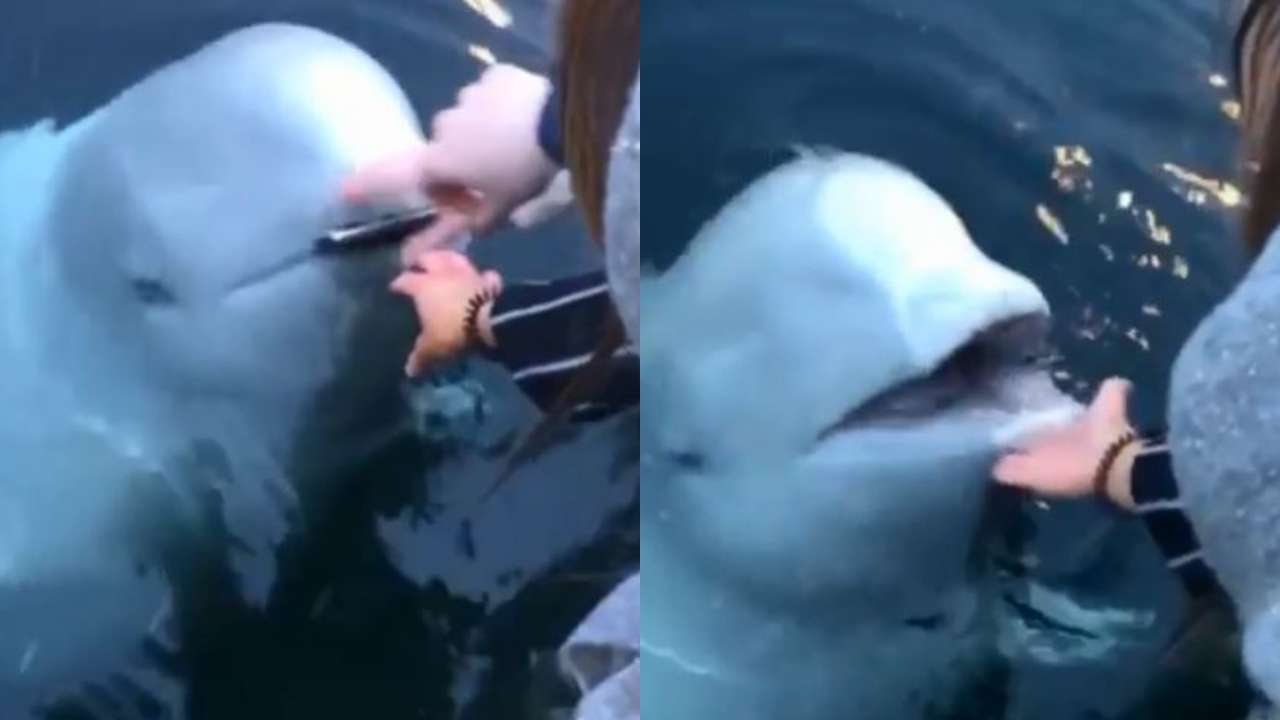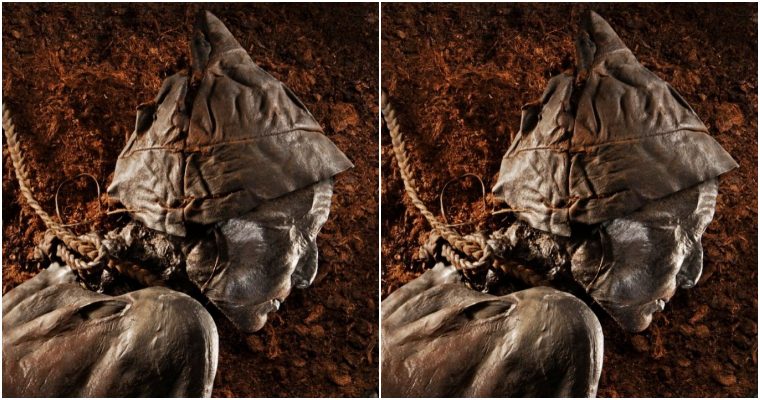Norwegian fishermen came across a strangely behaving beluga whale back in 2019, at the port of Hammerfest. The beluga was attracted to people, and it showed up far from the Arctic waters, where its natural habitat is found. But even more surprisingly, it was wearing a harness with a mount for a camera on it that was labeled “Equipment of St. Petersburg”.

Many think that the beluga came from the nearby Russian naval base of Murmansk, and was likely trained by the Russian navy, although it’s unclear how this particular whale ended up in Norway.
Locals have named the beluga Hvaldimir, after the Norwegian word for whale (hval) and the Russian president, Vladimir Putin. He quickly became a local celebrity and is still hanging around the city of Hammerfest. Unlike other members of his species, who are usually extremely shy when approached by humans or other animals and are likely to flee quickly, Hvaldimir adores all the attention he’s getting, even letting people to pet, feed, and take selfies with him.
He even displayed his skills when the phone of a bystander slipped out of her pocket and into the water, in an attempt to pet him. Hvaldimir dove back into the water, and emerged a few seconds later with the phone in his mouth. People speculate that this action of his is definitely the result of training, because once the phone is retrieved, he opens his mouth, as if expecting a treat in exchange.

The Russian government strongly denies that Hvaldimir was originally one of Russia’s experimental spy whales used for military purposes. Even the Russian Defense Ministry denies the existence of any sea mammal special operations program, although the same ministry published an ad in 2016 looking for three male and two female bottlenose dolphins and offering a total of $24,000, according to The Washington Post.
Furthermore, Hvaldimir’s case wasn’t the first time a beluga, trained by Russians, escaped its facility. In September 1991, a severe storm tore a hole in the fence and net enclosure of the Russian military base, Biotechnical Systems Institute in Sevastopol, Crimea. That was when Tichka, the beluga whale, escaped the base and made it to the Black Sea, ending up near a harbor in Gerze, Turkey. He was described as a tamed whale that would come up to people and let them give him fish and a pat on the head. He was also able to perform tricks, like catching balls. Like Hvaldimir, Tichka became a huge celebrity around the area, and was given the name Aydin (brightness in Turkish).

However, the most odd feature of the whale was that his teeth had been filed down flat. “We surmised they had filed its teeth so it could take a big object in its mouth, such as a magnetic mine, that it could stick on the hull of a foreign ship for military purposes.” – Said Pierre Béland, a research scientist in marine biology at the St. Lawrence National Institute of Ecotoxicology in Montreal, who was invited by the Turkish Ministry of Environment to ask for recommendations concerning Tichka’s situation.
Eventually, the Turkish government gave the Russian military the green light to recapture Tichka, but not everyone agreed to this decision. The whole town of Gerze, along with many other Turkish citizens, protested against the recapture, even holding demonstrations to leave the whale alone and grant him asylum. In the end, a Russian ship captured the whale in April of 1992, and took him back to Russia. In spite of his recapture, though, Tichka’s luck didn’t run out there; later in the same year, another severe magnitude thunderstorm broke the way open for Turkey’s favorite beluga whale, who made his way back to the harbor of Gerze, much to the delight of the locals. This time the Turkish Minister of Environment has even banned the capture of the whale in Turkish waters and the ex-military beluga has spent his spring with divers who fed him and the tourists who came to visit.
Sadly, the last day for people to see him was fast approaching; in July 1993 he appeared at a city festival, but the next morning he disappeared without a trace. Since then, no one has heard of the beluga, only his stories remain.

Unfortunately, trained marine mammals that are sociable with humans and seek interaction face many dangers in the form of boat propellers, fishing nets and tourists. They can also struggle to feed themselves in nature, since they never had to hunt for their own food before. These are some of the many reasons why captivating and training sea mammals is a bad idea. Captive marine mammals can suffer from a wide range of health problems, such as extreme stress, neurotic behaviors, and abnormal levels of aggression. They are also deprived of the environment nature has intended them to live in, and instead they are forced to bear extreme temperatures of waters unknown to them.
Poor Hvaldimir’s newfound fame has sparked an unregulated tourist industry around him, while his presence on fish farms is undesirable, as it causes stress to the fish and problems for the workers. His proximity to human populations has also resulted in serious injuries, most recently from a boat propeller.
Therefore, people who felt it’s important to take responsibility for the animal founded OneWhale, a nonprofit organization created to find a safe home for the young whale and other rescued beluga whales that are in need of a natural environment after a lifetime of living in manmade fish tanks.
According to OneWhale, they have provided funding and they continue to reach out for donations to make the Norwegian marine sanctuary a reality in the near future.
source: earthlymission.com







